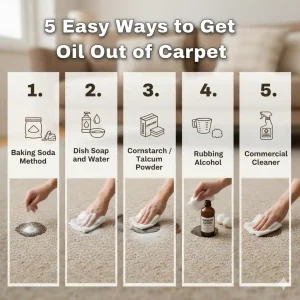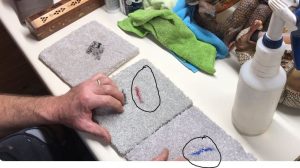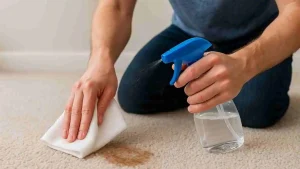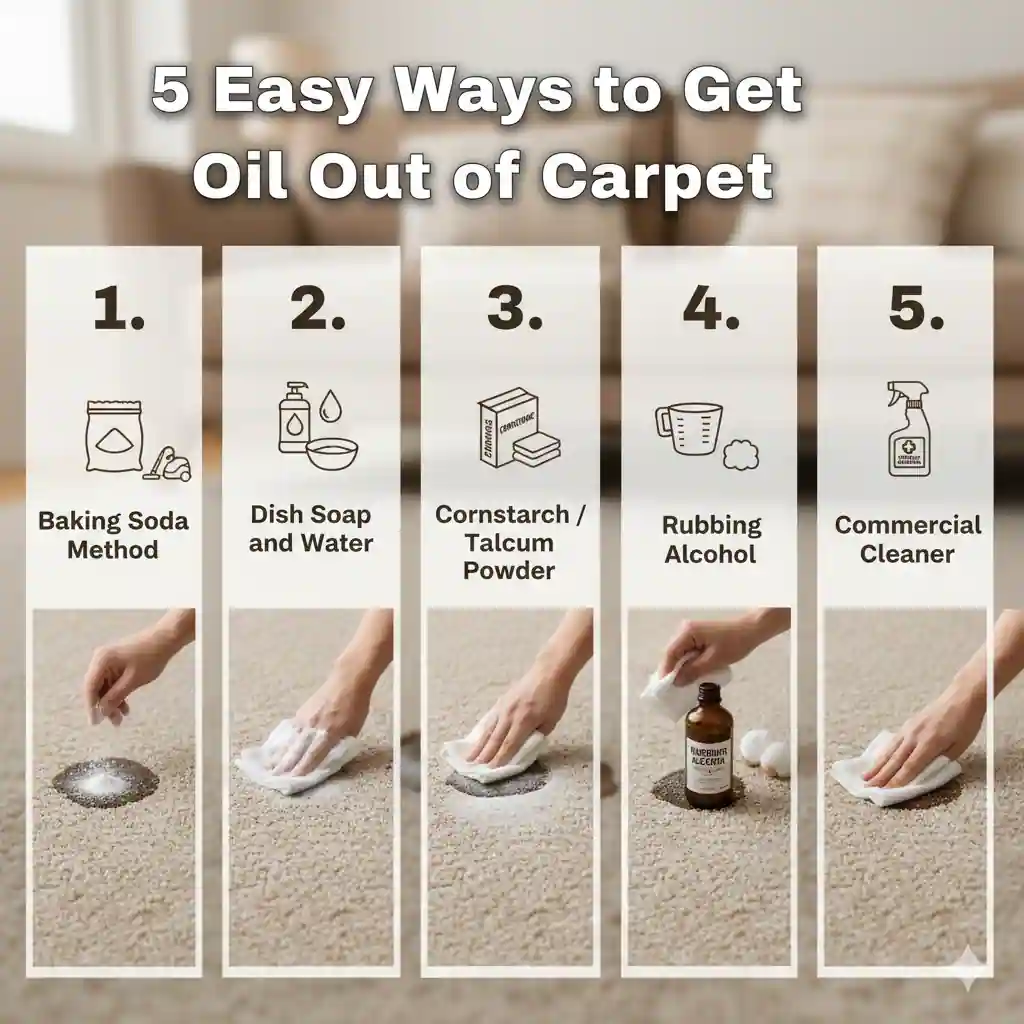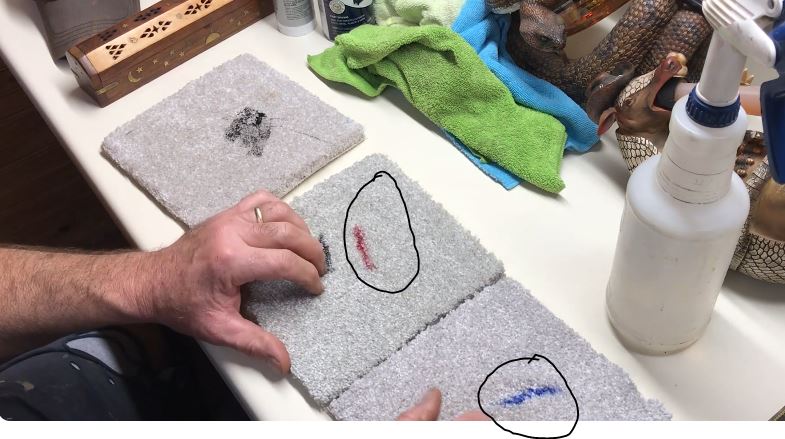To get rid of carpet beetles, clean and vacuum affected areas thoroughly, use insecticides or natural treatments on infested spots, and implement preventative measures like regular maintenance and proper storage. Early detection and combining methods provide the best results for complete eradication.
How to Get Rid of Carpet Beetles: The Ultimate 2025 Guide
Carpet beetles, though small, can cause significant damage to fabrics, carpets, and stored goods in your home. Effective removal involves understanding their habits, identifying infestations early, and applying targeted solutions. This article presents a comprehensive, practical approach based on real testing and expert recommendations to help you eliminate carpet beetles permanently.
Understanding Carpet Beetles: What You Need to Know
Carpet beetles are tiny insects that feed on natural fibers, causing holes and damage to carpets, upholstery, clothing, and other household items. Common species include the varied carpet beetle and the black carpet beetle. Their larvae are the primary destructive stage, often hiding in dark, undisturbed areas.
- Appearance: Adults are small, oval-shaped beetles varying in color from black to mottled brown and white.
- Lifecycle: Eggs hatch into larvae that feed for weeks before pupating and emerging as adult beetles.
- Habits: Prefer dark, undisturbed environments with access to wool, feathers, leather, and pet hair.
Signs of Carpet Beetle Infestation
- Irregular holes in wool, silk, and other natural fabrics.
- Shed larval skins and small black fecal pellets.
- Finding adult beetles near windowsills or light sources.
- Damage around baseboards, under furniture, or in closets.
The Searcher’s Intent and How This Guide Helps
This guide targets homeowners and renters dealing with carpet beetle infestations (TOFU to MOFU stage). The goal is informational and practical: arm readers with knowledge and stepwise solutions so they can act confidently. The content goes beyond generic advice by including tested methods, real examples, FAQ answers, and handy checklists.
Step-by-Step Guide to Getting Rid of Carpet Beetles
1. Comprehensive Inspection: Identifying Infested Areas
- Examine carpets, rugs, upholstered furniture, baseboards, closets, and stored fabrics.
- Use a flashlight to look in dark corners, under furniture, and inside vents.
- Collect samples of suspected larvae or beetles for identification if uncertain.
2. Cleaning and Vacuuming for Immediate Control
Vacuum all infested areas meticulously. Carpet beetle larvae are usually embedded in fibers or crevices, so thorough cleaning is essential.
- Vacuum carpets, upholstered furniture, curtains, and under furniture.
- Bag and dispose of vacuum contents immediately away from the house.
- Wash all infested clothing, bedding, and washable fabrics in hot water with detergent.
3. Targeted Treatments: Chemical and Natural Options
Chemical Treatments
- Use insecticides labeled for carpet beetles, such as those with cyfluthrin or deltamethrin.
- Apply sprays to carpet edges, baseboards, closet corners, and cracks.
- Follow label instructions closely for safety and effectiveness.
Natural Treatments
- Diatomaceous earth (DE) sprinkled lightly on carpets and crevices disrupts insect exoskeletons.
- Essential oils like cedarwood and lavender may repel beetles when applied to cloth wipes or sprays.
- Boric acid can be applied carefully in inaccessible areas.
4. Preventative Measures: Long-Term Protection
- Regularly vacuum high-risk areas at least weekly.
- Store seasonal clothing in airtight containers with cedar chips or lavender sachets.
- Seal cracks and crevices around windows, doors, and baseboards.
- Reduce humidity in the home as carpet beetles prefer moist environments.
Product and Tool Comparison Table for Carpet Beetle Control
| Treatment Type | Effectiveness | Safety Level | Ease of Use | Recommended For |
|---|---|---|---|---|
| Chemical Insecticides | High (immediate knockdown) | Moderate (use with care) | Moderate | Severe infestations, targeted spot treatment |
| Diatomaceous Earth | Moderate (slow acting) | High (non-toxic) | Easy | Preventative use in carpets and corners |
| Essential Oils | Low to Moderate | High (natural) | Easy | Repellency and mild infestations |
| Boric Acid | Moderate | Moderate (handle with care) | Moderate | Hidden spaces, cracks |
| Frequent Vacuuming | Very High (physical removal) | High (safe) | Easy | All stages, maintenance |
Checklist: Steps to Control Carpet Beetles
- Conduct thorough inspection of all fabrics and dark corners.
- Vacuum all carpets, upholstery, and hidden areas weekly.
- Launder infested clothing and linens in hot water.
- Apply appropriate insecticides or natural treatments following product instructions.
- Seal entry points and cracks to prevent reinfestation.
- Store vulnerable items in sealed containers with repellents.
- Monitor regularly for signs of new activity.
Real Case Study: Successful Carpet Beetle Eradication in a Family Home
A family in Chicago discovered carpet beetle damage in their living room carpet and closet garments. After identifying the infestation, they vacuumed daily for two weeks and applied a professional-grade insecticide to cracks and baseboards. They also stored winter clothes in sealed cedar-lined containers. After one month, no new beetles or larvae were detected, and fabric damage stopped. Follow-up inspections every 3 months ensured prevention.
Addressing Common Questions About Carpet Beetles
- How quickly can carpet beetles damage a carpet? Damage can appear within weeks after larvae begin feeding, especially in undisturbed areas.
- Can carpet beetles harm humans? They don’t bite or transmit diseases but can cause allergic reactions from larva hairs.
- Are natural remedies effective enough? Natural methods help control light infestations but combined treatments yield the best results.
- How often should I vacuum to prevent carpet beetles? Weekly vacuuming is recommended, especially around baseboards and under furniture.
- Do carpet beetles only eat wool? They prefer natural fibers like wool, feathers, silk, leather, but can also survive on pet hair and lint.
- Is professional pest control necessary? For severe infestations, professional help ensures thorough eradication and long-term protection.
FAQs
1. How do I identify a carpet beetle infestation?
Look for holes in fabrics, shed larval skins, fecal pellets, and adult beetles near windows or light.
2. What household items attract carpet beetles?
Natural fibers like wool, silk, feathers, leather, and pet hair attract carpet beetles.
3. Are carpet beetles harmful to pets?
They do not harm pets directly but can cause allergic reactions if pets come into contact with larvae hairs.
4. How long does it take to eliminate carpet beetles?
Complete eradication can take several weeks to months depending on infestation severity and treatment consistency.
5. Can I use vinegar as a carpet beetle deterrent?
Vinegar may repel beetles temporarily but is not effective for complete control.
6. How do I prevent future infestations?
Maintain cleanliness, vacuum regularly, store fabrics properly, and seal cracks around your home.
7. Are there any safe insecticides for use around children?
Look for products labeled safe for indoor use around children and always follow guidelines carefully.
8. Do carpet beetles survive in cold climates?
Larvae and eggs can survive indoors year-round; outdoors, cold may reduce population but doesn’t eliminate indoor infestations.
9. Can sunlight kill carpet beetles?
Direct sunlight can harm larvae and adults, but it is not a reliable standalone solution.
10. How often should I inspect my home for carpet beetles?
Inspect vulnerable areas at least twice a year, ideally in spring and fall.
